By Noah Pomo. Harare. Finding ‘Macheso borehole began in earnest at Copacabana. I am not sure where I am going exactly. I just know it’s somewhere in DZ. A helpful elderly man shows me the right taxis while the helpful driver hosts me and assures me: “I will show you the way.”
We go past the National Sports stadium, past Sanganayi Inn and stay on that road until we cross a very old bridge that has seen better days. A large new factory is on our left with left turn branching off. On our right is Mt Hampden. We stay on the road until the tarred road disappears.

The fine red dust is very excitable, so the driver closes his window. After a gap opens up, I join him in the front seat. We drive for about 2km with pick and drops until we reach a sprouting shopping center called “Kwa Kembo.” There is a satellite signal booster. There are many shops, bars and everywhere school complexes are booming.
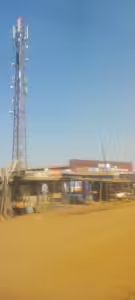
Just after Kembo’s shops the driver stops abruptly: ‘You drop off here. See that left turn? Take that to Macheso’s borehole”
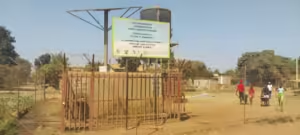
I express my gratitude and disembark.
AS I am approaching the left turn, 20m away, I realise there is a borehole it’s written” ‘Dzivaresekwa Federation piped water scheme.’ It was produced by Oxfam, Unicef and City of Harare, says the modest billboard. The borehole is solar powered and secured.
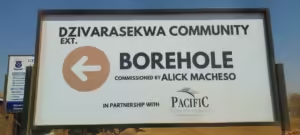
Another smaller billboard announces “Dzivaresekwa Community extension Borehole commissioned by Alick Macheso” with a smaller logo identifying “Pacific Storm” as partners. It is clear Pacific Storm would like to take a backseat and let Macheso get all the glory. One of the shareholders, Adam Molai has already donated 2 boreholes in Marondera, his hometown through his ‘Adam Molai Foundation,’ leaving as small a footprint as possible but solving a major problem for communities. Molai’s dad Philip was a millionaire in the 1970s with businesses in Chitungwiza, Dorowa (Buhera) and Marondera.

As I take a premature right turn, after the left, I see another older community borehole in an area called ‘Federation,’ the ghetto of DZ extension. A group of young boys are playing soccer with 4 forming a square and 2 marking in the middle, a popular game called ‘gaps’ in mild language but with a more coarse vernacular name. The boys are dribblers. They are very good. Just another 6 skilled boys playing soccer in Zimbabwe. They are playing on tarred roads, as they do here in DZ and have done for over half a century.
I politely greet everyone, a residue of my 1980s visits to DZ4, which was nothing on DZ 1-3. Bullies used their hands and fights are common. I don’t need a warning. As I approach the correct “Macheso borehole,’ the area opens up to an empty space and then a lower density area. Macheso and partners have done their homework. 10 water taps, a water tank, a big Macheso billboard with a studio pic and solar panels are fenced off. It’s a very welcoming space.
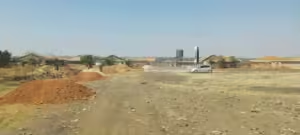
As I soon learn, just a few months ago this place was a bad slum dumpsite with dumped baby disposable nappies causing the worst nuiscance. The work began with the clearing of this rubbish. To really be honest Zimbabwe has nothing approaching a true slum. Comfortable homes were largely mortgaged before people started buying stands financing with their own savings or bank loans. Some of these neighborhoods like Warren Park, Kuwadzana, parts of DZ, Mabvuku and so on were developed after independence in 1980.

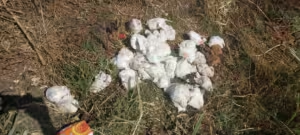
Overpopulation or a fight for resources like water and electricity has meant water and electricity are scarce resources. But these problems are being solved by sinking boreholes ranging from 5m to 100m. I have seen some really poor slums in Diepsloot in Johannesburg and in other areas of South Africa. The homes in DZ extension look well planned, some are secured and the finish is mostly competent. In a few years the property values will rise.

While debate rages on over the success of Macheso’s album “Kupa Kuturika” what he has been involved in here is more lasting legacy beyond debate. We are about to talk to 2 beneficiaries of this project, 20km from Harare CBD to find out the impact of the boreholes in their backyards.

“My name is Annie or Anna Mulanje (42) or Mai Kabvondora. I am of Malawian origin below Mt Mulanje and his dad was the chief. I grew up in Highfields.”
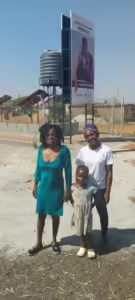
Mt Mulanje is popular in Zimbabwe for the brand of rice from there also known as Kilombero rice.
“In July some man came and cleared the rubbish which would flow into our houses during the rain sources. We just saw a front end loader clearing the rubbish. Then a couple of days later we saw a borehole drilling truck on the Operation”Clean Up Harare. They drilled for 60m and assured us the water is from way below and will be clean. Then they put the stand and the water tank and Alick Macheso Billboard was also installed.”

“These new stands are called ‘Pure Gold’ while the houses over there are called ‘Federation’ which is the older part of DZ extension.”
‘We were invited to the commissioning to meet Alick Macheso and he came and he commissioned the borehole with some VIPs and councillors and people from City of Harare municipality.”

“There was lax security so people almost abducted Macheso. He was mobbed as he gave his speech and we could only catch snatches of how he use to fish in this area and run a mice business. He then opened the taps secured by a fence.”

“I love the songs ‘Waikupanei gungwa’ and ‘Zuro ndiuro nhasi ndi nhasi.’”
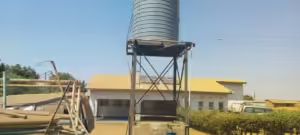
“The people of Federation used to deny us access to their boreholes, especially my kids. We have our own 10m boreholes but the rubbish would show up when they were flooded. Mine is now 10m. they charged us about US$10 per metre. The water table is receding. So we would walk very long distances to get water. My 2 older kids would go to fetch the water for us.”
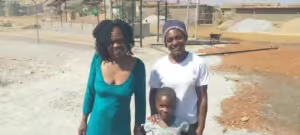
“We hope the taps and the solar panels can be secured and that access can be controlled from the youngest children.’
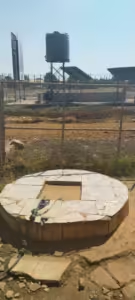
“They managed to dig 60m for this borehole. They secured it with a fence and they added a Water tank and solar power. Federation suburb has electricity. But we only have electricity poles and are still waiting for electricity.”

Another helpful lady also shared her own story: “My name is Mrs Nyamurima. I am 45 years. I have 3 kids. My oldest is 25 and the other is 23. I grew up in Warren Park 1 near Mutomba, after the Police Station. We started building and staying here 8 years ago. We own this house.”
“When we moved here we dug a borehole. It’s a wetland. So flooding is a problem especially on the roads. We would get water from Federation.”
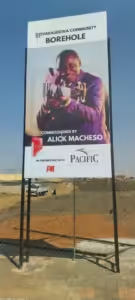
‘There was a borehole installed in the Youth area nearby.”

“The flood water gathers all the rubbish and the rubbish surfaces in out shallow wells. Then the water becomes useless for cooking.”
“This little road behind my house was a rubbish dumping area.”
“We saw people clearing the area. Then we saw the borehole drillers. This was fortunate because my own borehole dries up seasonally.”

“Macheso grew up across the forest in DZ2 before the stands were developed. He says the mice new him by name with his huge hoe and his hose pipe. He would sell mice and exchange with chickens. When we used to stay hear there was an anthill that was here. He says he almost got bitten by a snake.”

“We have to look after the borehole and taps. I wish there could be more security for the taps and the boreholes. The boys from Federation are naughty. They play soccer in that area and play with their bikes. They are not very disciplined. If you try to teach them they can insult you and mob you. So we just wish the place was secured so it can live longer and be lockable.”
Elsewhere in DZ Extension Macheso will be glad he doesn’t have to chase mice as the impressive building work and increasing professionalism is taking over completely. I am impressed in the changing land-use and the development seen in this area. DZ Extension is sandwiched between Bulawayo road and Mt Hampden. Once the back of beyond, this place is teaming with life, education, hopes and dreams. More boreholes will water this growing economy while solar is one sure way of adding light. This is the story of DZ extension and Macheso’s borehole is more than just a footnote.

